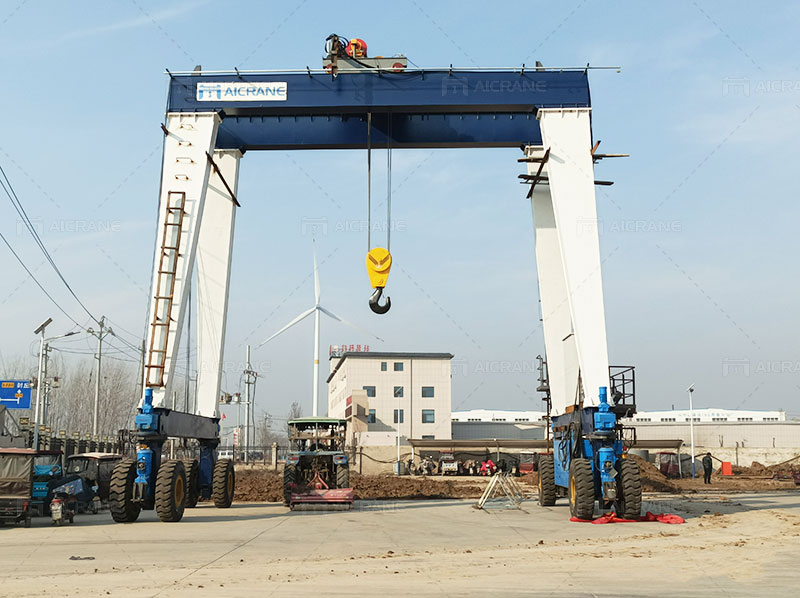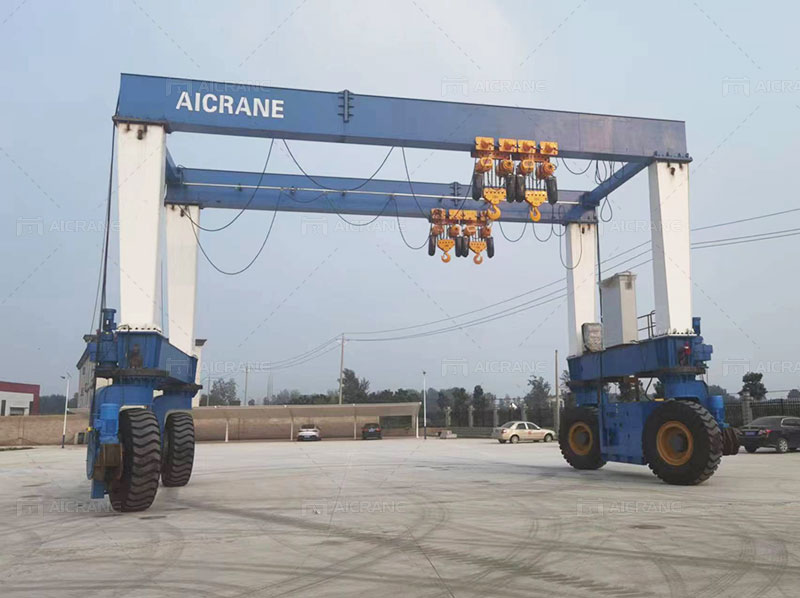Rubber Tyred Gantry (RTG) cranes have revolutionized material handling in various industries, particularly in container terminals, intermodal yards, and logistics centers. One of their defining features—mobility—sets them apart from other types of gantry cranes, such as rail-mounted gantry (RMG) cranes. This mobility enables RTG cranes to operate flexibly across different locations, optimizing workflows and boosting efficiency. This article explores the role of RTG cranes’ mobility in material handling, the technological innovations that enhance it, and the industries that benefit from these versatile machines.

The Importance of Mobility in Material Handling
Mobility is a critical factor in material handling operations, particularly in industries where cargo is stored and moved across vast areas. Unlike stationary cranes, RTG crane is equipped with rubber tires and advanced steering mechanisms, allowing it to traverse large yards and reposition itself as needed. This mobility enhances operational flexibility, reduces bottlenecks, and ensures that cargo can be handled efficiently.
In container terminals, for example, RTG cranes play a crucial role in stacking and unstacking containers. Their ability to move between stacks and travel across storage areas reduces dependency on additional equipment, such as reach stackers or forklifts. This not only saves costs but also minimizes the need for multiple transfers, which can increase the risk of cargo damage.
Steering Modes: A Key to Enhanced Mobility
The advanced steering capabilities of RTG cranes contribute significantly to their mobility. Most modern RTG cranes offer multiple steering modes to adapt to different yard layouts and operational requirements:
- Straight Mode:
- This mode allows the crane to travel in a straight line, ideal for moving between long rows of containers or materials.
- Crab Mode:
- In crab mode, all wheels can be aligned to move the crane sideways. This is particularly useful for precise positioning in narrow aisles or tight spaces.
- Pivot Mode:
- Pivot mode enables the mobile gantry crane to rotate around a fixed point, which is invaluable in confined areas where turning space is limited.
- Carousel Mode:
- This mode allows for smooth circular movements, making it easier to reposition the crane in complex yard layouts.
These steering modes ensure that RTG cranes can navigate various terrains and configurations, offering unmatched versatility in material handling operations.

Applications of Mobile RTG Cranes
The mobility of RTG cranes makes them indispensable in several industries. Here are some key applications:
- Container Handling in Ports:
- The RTG container crane is commonly used in container terminals to stack and retrieve containers. Its ability to move seamlessly across container yards ensures efficient use of space and time.
- Intermodal Yards:
- In facilities where cargo is transferred between different modes of transport (e.g., rail to truck), RTG cranes’ mobility enables smooth transitions and reduces delays.
- Logistics and Warehousing:
- RTG cranes are increasingly being used in large warehouses to handle bulk materials, heavy machinery, and oversized loads. Their mobility ensures that materials can be moved across the facility with ease.
- Industrial Applications:
- Industries such as steel production and timber processing use RTG cranes to handle raw materials and finished goods. The ability to move freely across industrial sites enhances productivity and safety.
Technological Innovations Enhancing Mobility
Recent technological advancements have further improved the mobility of RTG cranes, making them more efficient and environmentally friendly:
- Hybrid and Electric RTG Cranes:
- Traditional RTG cranes are powered by diesel engines, but modern versions come with hybrid or fully electric power systems. These innovations reduce emissions, lower operating costs, and provide smoother mobility.
- Automated Guidance Systems (AGS):
- AGS allows RTG cranes to navigate autonomously within predefined zones. This reduces human error and increases the precision of material handling operations.
- Advanced Suspension Systems:
- Enhanced suspension systems enable RTG cranes to traverse uneven surfaces without compromising stability. This is particularly useful in industrial yards with variable terrains.
- Remote Control and Monitoring:
- Operators can control RTG cranes remotely, allowing for better maneuverability and real-time adjustments based on yard conditions.
Benefits of RTG Crane Mobility
The mobility of RTG cranes provides several benefits, including:
- Operational Flexibility:
- RTG cranes can easily adapt to changes in yard layouts or operational demands, ensuring seamless workflows.
- Space Optimization:
- By moving efficiently between storage areas, RTG cranes help maximize the use of available space.
- Cost Efficiency:
- The reduced need for auxiliary equipment and faster handling times result in significant cost savings.
- Improved Safety:
- Mobile RTG cranes minimize the need for manual handling of heavy loads, reducing the risk of workplace accidents.
- Environmental Sustainability:
- Hybrid and electric gantry crane contributes to greener operations, aligning with global sustainability goals.
Challenges and Considerations
While the mobility of RTG cranes offers numerous advantages, there are some challenges and considerations to keep in mind:
- Initial Investment:
- The cost of purchasing and setting up RTG cranes can be high. However, the long-term benefits often outweigh the initial expense.
- Maintenance Requirements:
- Regular maintenance is essential to ensure optimal performance, particularly for the tires and steering mechanisms.
- Operator Training:
- Skilled operators are crucial for maximizing the mobility and efficiency of RTG cranes. Training programs should focus on steering modes, load handling, and safety protocols.
- Infrastructure Compatibility:
- Yard layouts and surfaces must be compatible with the mobility features of RTG cranes to ensure smooth operations.
Conclusion
The mobility of RTG cranes has transformed material handling across various industries, offering unparalleled flexibility, efficiency, and cost-effectiveness. With advanced steering modes, innovative technologies, and applications in diverse sectors, RTG cranes continue to play a vital role in modern logistics and industrial operations. By addressing challenges such as maintenance and operator training, businesses can fully harness the potential of these versatile machines. As industries evolve and demand more agile solutions, the mobility of RTG cranes will remain a cornerstone of efficient material handling systems.